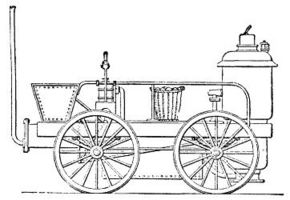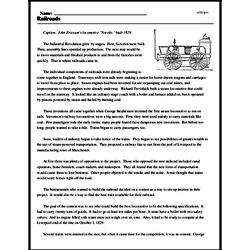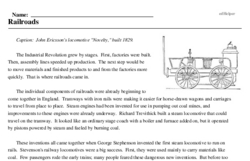Railroads
Caption: John Ericsson's locomotive "Novelty," built 1829.
The Industrial Revolution grew by stages. First, factories were built. Then, assembly lines speeded up production. The next step would be to move materials and finished products to and from the factories more quickly. That is where railroads came in.
The individual components of railroads were already beginning to come together in England. Tramways with iron rails were making it easier for horse-drawn wagons and carriages to travel from place to place. Steam engines had been invented for use in pumping out coal mines, and improvements to these engines were already underway. Richard Trevithick built a steam locomotive that could travel on the tramway. It looked like an ordinary stage coach with a boiler and furnace added on, but it operated by pistons powered by steam and fueled by burning coal.
These inventions all came together when George Stephenson invented the first steam locomotive to run on rails. Stevenson's railway locomotives were a big success. First, they were used mainly to carry materials like coal. Few passengers rode the early trains; many people feared these dangerous new inventions. But before too long, people wanted to take a ride. Trains began to carry passengers, too.
Soon, leaders of industry began to take notice of the trains. They began to see possibilities of greater wealth in the use of steam-powered transportation. They proposed a railway line to run from the port of Liverpool to the manufacturing town of Manchester.




